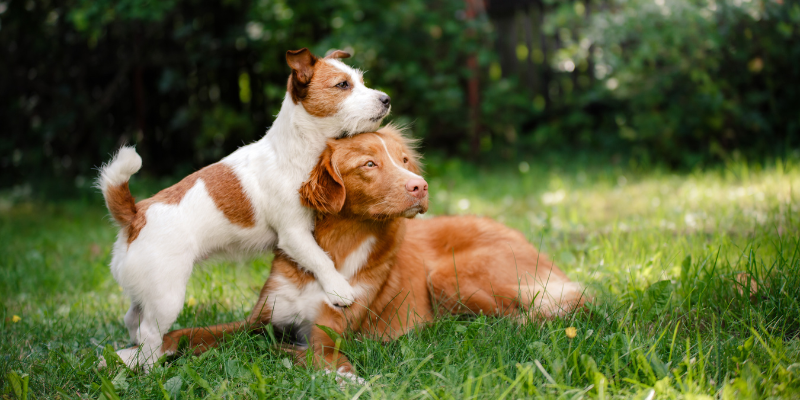If you’re contemplating getting a second dog or adopting two pups at once, it’s important to consider the potential benefits and difficulties of becoming a double-dog household. Here’s the down low on upgrading to a dynamic dog duo.
The potential benefits of adopting two dogs include:
1. Entertainment and exercise
Active dogs will love having a friend to chase and play with. Having a playmate around all the time may also mean that your dogs are less likely to show negative behaviours associated with being bored or lonely.
2. Comfort
The transition to a new home is daunting for any pet, but arriving with a family member or a settled-in friend can help provide some comfort to your new pet and reduce those “first-night blues”.
3. Learning
If you have a well-trained older dog, a new pup can learn a lot by following its older friend around. This can mean easier toilet training, obedience training, and walks and more settled behaviour at night.
4. Economies of scale
Double the pets usually doesn’t add up to double the work. Owners of new dogs often report that adding a second pet to their household doesn’t seem to change the workload too much, given their pet care routine is already in place.
Additionally, many owners find that their pets are less demanding of human attention if they are keen to interact with their canine siblings.
5. A new lease of life for older pets
Provided that early interactions are supervised to ensure a young puppy doesn’t excessively harass the older dog, introducing a younger dog to your more senior canine family member can give the older pet a new lease of life. Many owners report that their older dog becomes livelier and more playful in the presence of a pup.
However, before you eagerly sign up for a double dose of dog, it’s also important to consider the potential drawbacks of becoming a multi-pet household. These include:
1. Double the bills
As well as food, parasite control and pet insurance costs, consider the financial impact of doubling the costs for your pet’s medical care – this includes routine procedures (such as vaccination, desexing and dentals) and the treatment of any unwellness or injury episodes.
2. The settling-in period
It’s recommended not to leave a younger pup unsupervised with an older dog until you’re sure that the puppy respects the older dog’s limits and knows when to back off. This required supervision will temporarily increase your workload.
3. The potential for behavioural issues
Unfortunately, adding a second pet can prove problematic if either dog already has behavioural issues.
If either dog shows possessive aggression tendencies, having two pets could be dangerous unless you are prepared to take special precautions to prevent fights, such as only feeding pets whilst crated and not offering long-lasting chews.
Some owners have also adopted a second dog, expecting it to “cure” their current pet of separation anxiety or problematic barking issues, only to find that it either doesn’t make a difference or, even worse, that both pets start to demonstrate the problem behaviour!
For more personalised advice on multi-dog households and canine behaviour, consult our canine-competent team.






